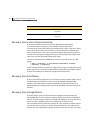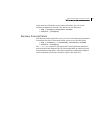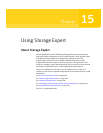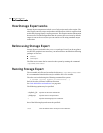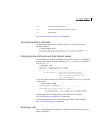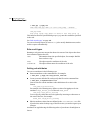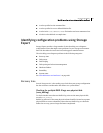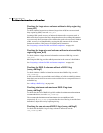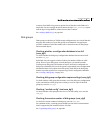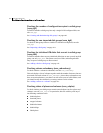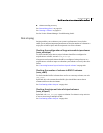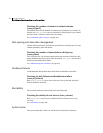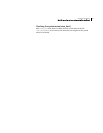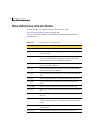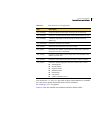
450 Using Storage Expert
Identifying configuration problems using Storage Expert
Checking for large mirror volumes without a dirty region log
(vxse_drl1)
To check whether large mirror volumes (larger than 1GB) have an associated
dirty region log (DRL), run rule
vxse_drl1.
Creating a DRL speeds recovery of mirrored volumes after a system crash. A
DRL tracks those regions that have changed and uses the tracking information
to recover only those portions of the volume that need to be recovered. Without
a DRL, recovery is accomplished by copying the full contents of the volume
between its mirrors. This process is lengthy and I/O intensive.
See “Preparing a volume for DRL and instant snapshots” on page 275.
Checking for large mirrored volumes without a mirrored dirty
region log (vxse_drl2)
To check whether a large mirrored volume has a mirrored DRL log, run rule
vxse_drl2.
Mirroring the DRL log provides added protection in the event of a disk failure.
See “Preparing a volume for DRL and instant snapshots” on page 275.
Checking for RAID-5 volumes without a RAID-5 log
(vxse_raid5log1)
To check whether a RAID-5 volume has an associated RAID-5 log, run rule
vxse_raid5log1.
In the event of both a system failure and a failure of a disk in a RAID-5 volume,
data that is not involved in an active write could be lost or corrupted if there is
no RAID-5 log.
See “Adding a RAID-5 log” on page 283.
Checking minimum and maximum RAID-5 log sizes
(vxse_raid5log2)
To check that the size of RAID-5 logs falls within the minimum and maximum
recommended sizes, run rule
vxse_raid5log2.
The recommended minimum and maximum sizes are 64MB and 1GB
respectively. If
vxse_raid5log2 reports that the size of the log is outside these
boundaries, adjust the size by replacing the log.
Checking for non-mirrored RAID-5 logs (vxse_raid5log3)
To check that the RAID-5 log of a large volume is mirrored, run the
vxse_raid5log3 rule.



